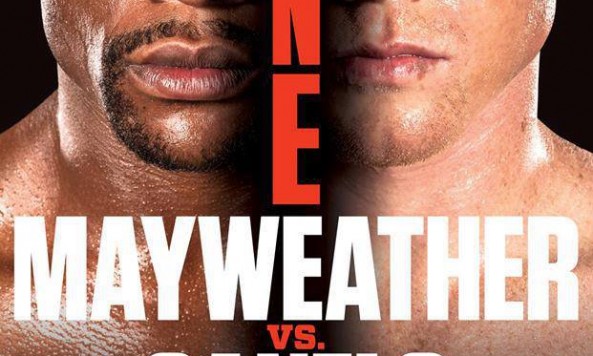If the figures released Thursday are to be believed — always a dicey proposition — then Floyd Mayweather vs. Canelo Alvarez on Showtime pay-per-view last weekend exceeded all reasonable expectations with at least 2.2 million U.S. buys, good for #2 all-time for a boxing PPV buy rate, and could challenge for #1 by the time the counting is done. It also achieved a record for gross revenue. And a boxing record for viewership in Mexico. And it already had eclipsed the gate record for Nevada, and the amount guaranteed to one fighter, and surely other gaudy benchmarks I'm leaving out.
Boxing people are thoroughly sick of arguing with non-boxing people who say the sport is dead, and I am, too, but this is not the kind of thing that dead sports do. Boxing is a "niche" sport, surely not what it once was in the 1980s and further back when it was more of a mainstream sport. But there's a long distance between "not what it once was" and "niche" and anything approaching dead. Nor is this the only evidence of life. Alvarez drew 40,000 people to his last fight. There were 13,000 at a show in Brooklyn this year, more than 8,000 at two fights in Los Angeles and San Antonio for relatively unknown fighters, and there surely will be at least that many Sept. 28 for Julio Cesar Chavez, Jr.-Bryan Vera and it goes on and on in America. Carl Froch-Mikkel Kessler in London drew an audience of nearly 20,000, Wladimir Klitschko is about to do huge figures in Germany and Manny Pacquiao is about to do huge numbers in China and it just doesn't stop. Not bad for a niche sport, and impossible for a dead one, in any sense of the word.
And the gap between the perception of Mayweather's appeal — villainous or no — among many hardcore fans and the reality of that appeal with casual fans continues to befuddle. A number of writers and fans have complained that casual fans that saw Mayweather-Canelo are sure to flee from the sport, as it was a one-sided and by some standards boring encounter. But almost every Mayweather fight is like that. Those casual fans keep coming back to Mayweather bouts over and over and over again anyway. I had asked before the Robert Guerrero fight whether fans were getting sick of Mayweather, whether his inability to get into the ring with Pacquiao would dampen enthusiasm. The answer surely for some to both questions is "yes." But by and large the answer is "no" for a large enough segment of humans who like watching boxing or would consider watching boxing at any given moment that there is a sizable audience willing to shell out money for Mayweather bouts.
And, of course, some of the success of this event has to be attributed to Canelo — the Mexican viewership figure of 77 percent of households, for instance. No matter who believed this fight would be competitive or not and how much they got sold on empty hype or whatever they expected by way of excitement or none, there was no way that a fight between the most popular American fighter and the most popular Mexican fighter was going to do poorly.
The usual caveats apply to all this "announced numbers" business. There probably is some trickeration in there, like Xfinity offering three months of free Showtime to buyers of the event called "The One" to boost buy rates, or the various gross records exceeded with the help of overpricing and the changing value of the dollar. There's no other figure out there this time on the PPV buy rate, though, unlike when credible reporters were casting doubt on Mayweather-Guerrero doing 1 million buys. We're sure to get a fresh wave of questions about Mayweather's next fight given his dearth of opponents with Canelo's marketability or even his perceive-ability as a challenge. But it would be unwise to count Mayweather out entirely — or, despite all the talk on various ESPN platforms, boxing.

